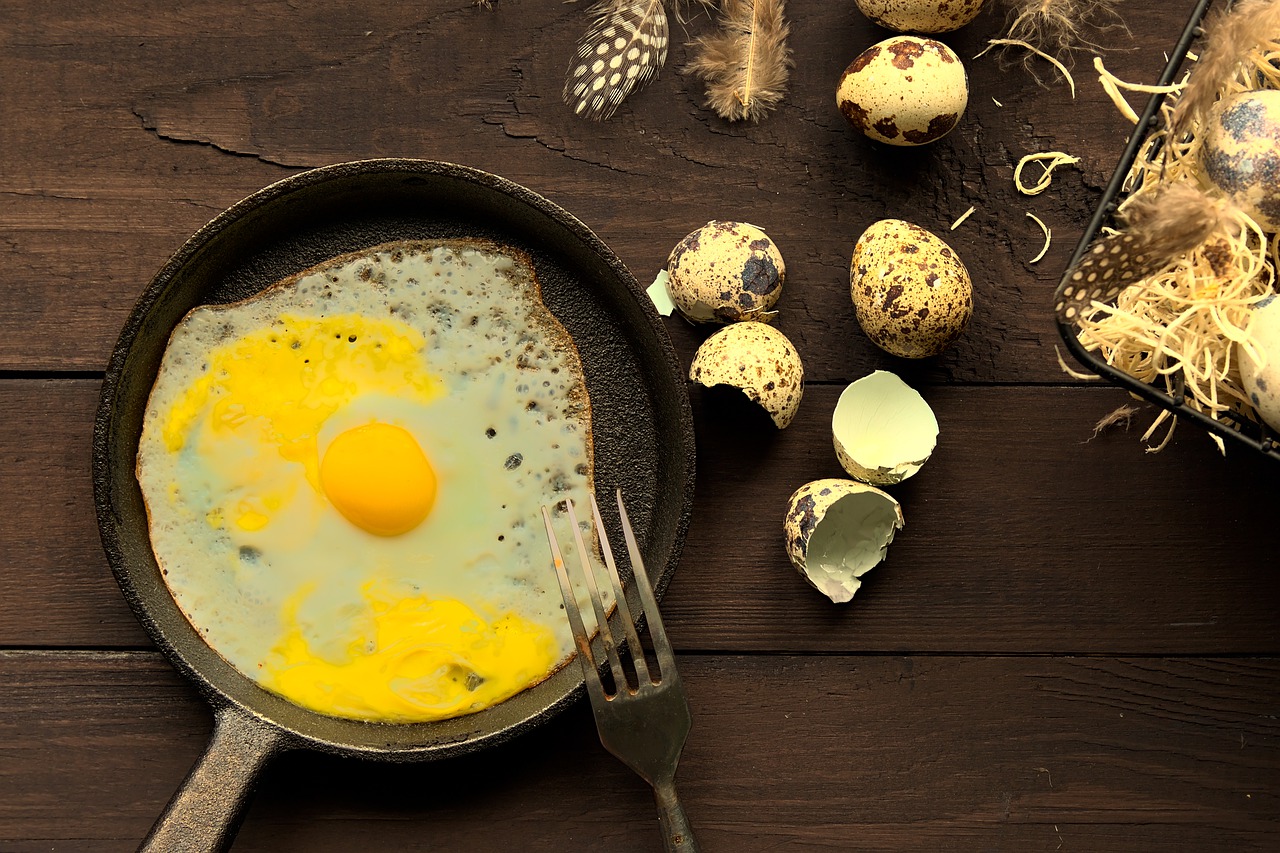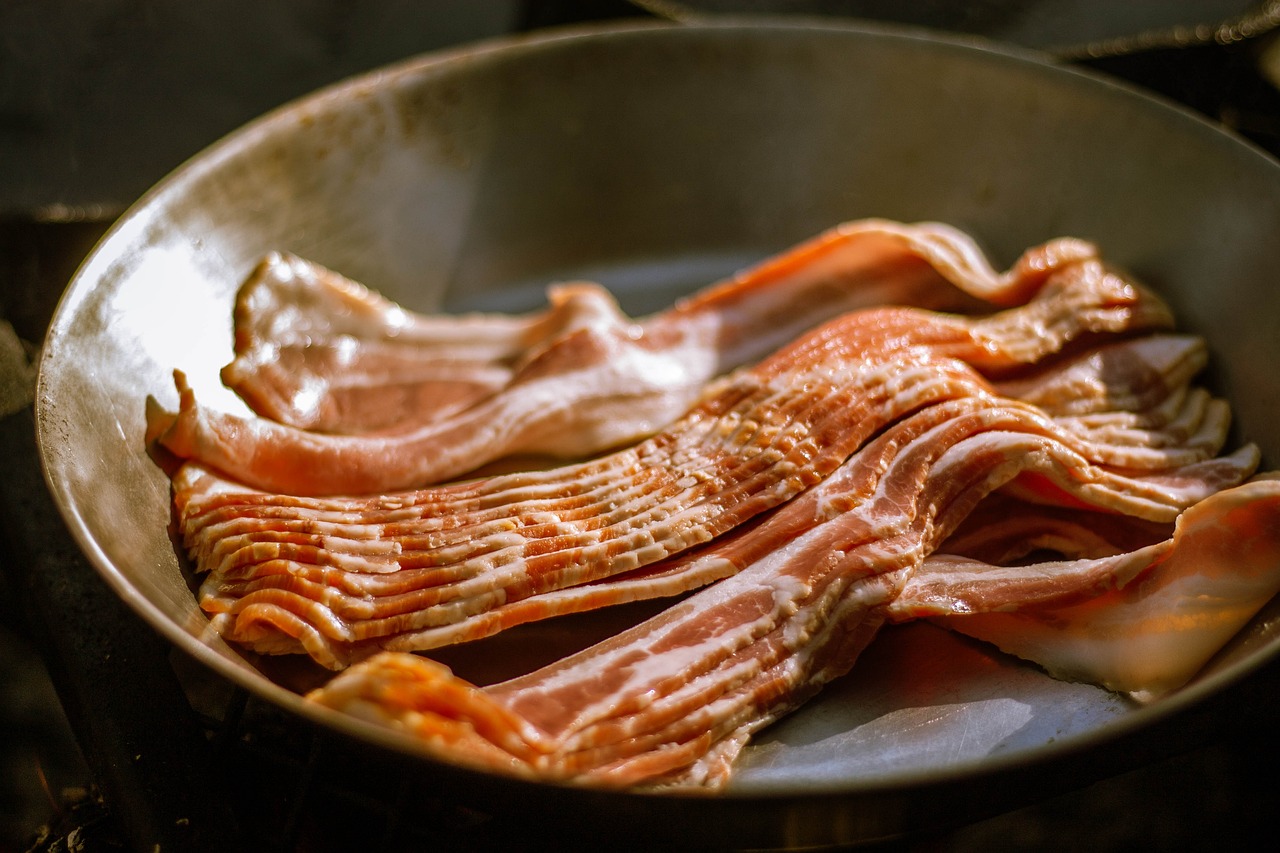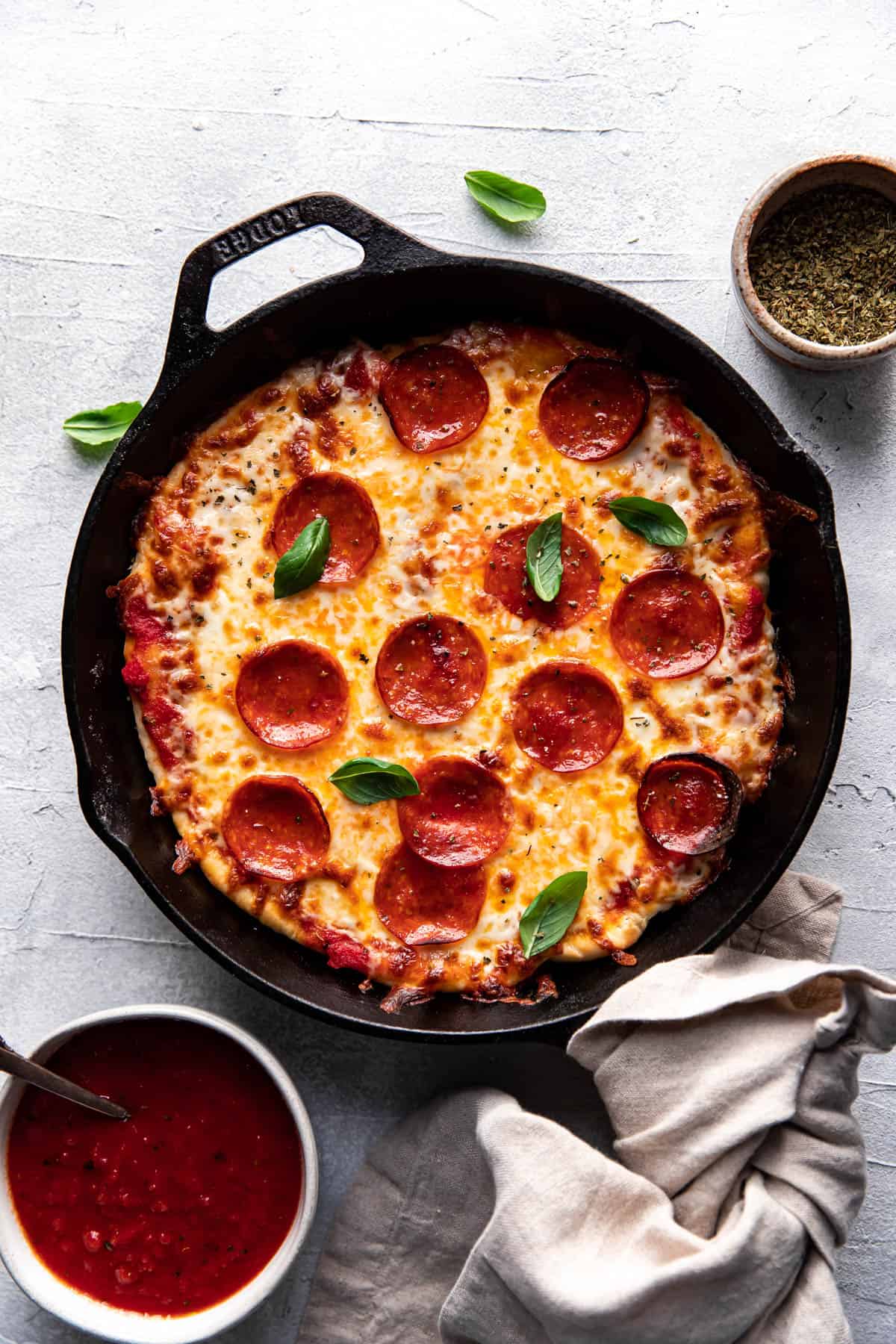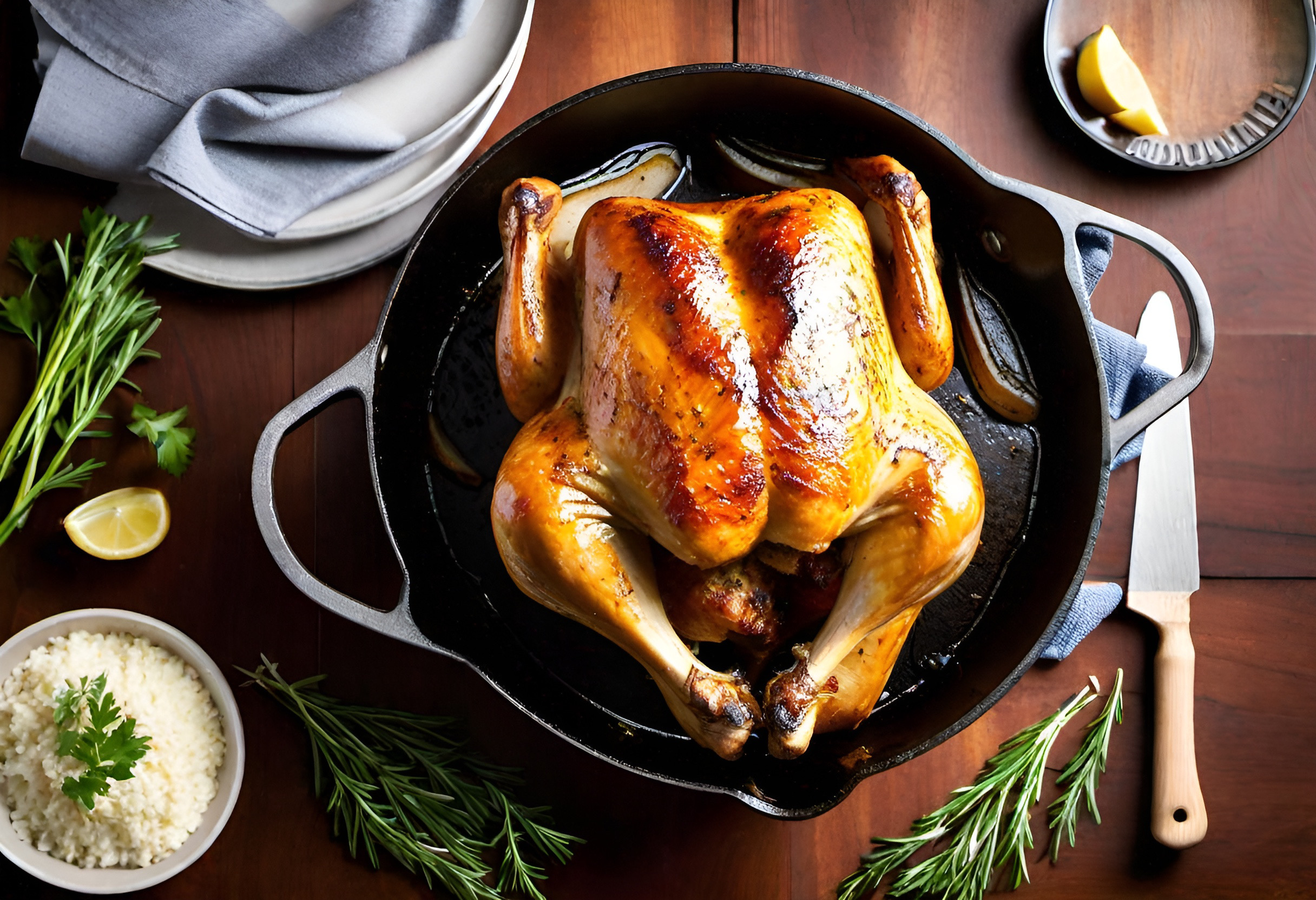If you’re new to using a Lodge Cast Iron Pan, fret not, because this article is here to guide you through every step of the way. From cooking with cast iron to properly seasoning and cleaning your pan, we’ve got you covered.
We’ll even provide you with troubleshooting tips in case you encounter any issues. If you’re in the market for a new cast iron product, we’ll also offer a helpful guide to assist you in your decision-making process.
And if you’re feeling adventurous, we’ve included sections on baking, griddles, carbon steel, grilling, and even camp cooking. Still have questions? Don’t worry, we’ve got that covered too with a FAQs section.
So grab your apron and get ready to master the art of using a Lodge Cast Iron Pan!
Cooking with Cast Iron


Benefits of Cooking with Cast Iron
Cooking with cast iron pans offers a myriad of benefits that make it a favorite among professional chefs and home cooks alike. One of the key advantages of cast iron is its ability to distribute heat evenly. This means that your food will cook consistently, avoiding any hotspots that can result in uneven cooking.
Cast iron also retains heat well, allowing you to keep your meals warm even after you remove them from the stove or oven. Additionally, cooking with cast iron can enhance the flavor of your dishes, as the seasoned surface of the pan imparts a unique and delicious taste to your food.
Lastly, cast iron pans are incredibly durable and can last for generations when properly cared for.
Understanding Heat Distribution
One of the most important aspects of cooking with cast iron is understanding how it distributes heat. Cast iron pans have excellent heat retention, meaning they can maintain a consistent temperature throughout the cooking process.
When you preheat your cast iron pan, the heat is evenly distributed across the entire surface, ensuring that your food cooks evenly. This makes cast iron perfect for searing meats, as it creates a nice crust without overcooking the interior.
It’s important to note that cast iron takes longer to preheat compared to other types of cookware, so allowing it sufficient time to heat up is crucial for optimal cooking results.
Choosing the Right Size Cast Iron Pan
When it comes to choosing the right size cast iron pan, it’s essential to consider your cooking needs and the number of people you typically cook for. Lodge offers a wide range of cast iron pans, from small skillets to large Dutch ovens, to accommodate various cooking requirements. A 10-inch skillet is a versatile choice for everyday cooking tasks like frying eggs, sautéing vegetables, or searing a small steak.
On the other hand, a 12-inch skillet provides more room for larger quantities of food, making it ideal for family or dinner parties. Assess your cooking habits and select a cast iron pan that suits your needs.
Preheating the Pan
Preheating your cast iron pan is a crucial step to ensure even cooking and prevent food from sticking. Before you start cooking, preheat the pan on medium to medium-high heat for about 5 minutes. This allows the cast iron to evenly distribute heat across the surface.
To test if the pan is hot enough, sprinkle a few drops of water onto the surface. If the water sizzles and evaporates quickly, the pan is ready for cooking. Preheating also helps create a natural non-stick surface, which reduces the chances of food sticking to the pan during cooking.
Cast Iron Seasoning
Why Seasoning is Important
Seasoning your cast iron pan is essential for creating a smooth, non-stick surface and preventing rust. Seasoning involves coating the pan with a thin layer of oil or fat and heating it to create a polymerized layer that bonds to the iron.
This process not only enhances the durability of the pan but also improves its cooking performance. A well-seasoned cast iron pan will develop a natural non-stick surface over time, making it easier to clean and reducing the amount of oil or fat needed for cooking.
Regular seasoning is necessary to maintain the integrity of the cast iron and ensure its longevity.
Seasoning a Lodge Cast Iron Pan
To season your Lodge cast iron pan, follow these simple steps:
- Clean your pan thoroughly with hot water and a stiff brush. Avoid using soap, as it can strip away the seasoning.
- Dry the pan completely using a kitchen towel or by placing it on the stove over low heat until all moisture has evaporated.
- Apply a thin layer of oil or fat to the entire surface of the pan, including the handle and exterior. You can use vegetable oil, flaxseed oil, or even lard.
- Wipe off any excess oil with a paper towel.
- Place the pan upside down in a preheated oven at 375°F (190°C) for about an hour. This allows the oil to polymerize and bond to the cast iron, creating a durable seasoning layer.
- After an hour, turn off the oven and let the pan cool down inside before removing it.

Maintaining Seasoning
To maintain the seasoning of your cast iron pan, it’s essential to follow a few guidelines:
- Avoid using soap when cleaning your pan. Instead, use hot water and a stiff brush to remove any food residue.
- Dry the pan thoroughly after each use to prevent moisture from causing rust.
- Apply a light coat of oil or fat to the pan after each use to replenish the seasoning and protect the surface.
- Store your cast iron pan in a dry place to prevent any moisture exposure that could lead to rust formation. You can also place a paper towel or cloth inside the pan to absorb any excess moisture.
How to Clean Cast Iron
Cleaning Immediately After Use
Cleaning your cast iron pan immediately after use is essential to remove any food particles and prevent them from becoming stuck or causing rust. Start by rinsing the pan with hot water to loosen any residual food. Then, use a stiff brush or sponge to scrub away any remaining debris.
Avoid using soap, as it can strip away the seasoning. After cleaning, dry the pan thoroughly with a kitchen towel or by placing it on the stove over low heat until all moisture has evaporated.
Removing Stubborn Residue
If you encounter stubborn residue that doesn’t come off with a simple rinse and scrub, there are a few methods to try. One option is to create a paste using coarse salt and water. Apply the paste to the affected areas and use a cloth or brush to scrub away the residue. Another option is to boil water in the pan to loosen the stuck-on food.
After boiling, use a brush or sponge to scrub off the residue. For particularly stubborn residue, you can also use a small amount of mild dish soap, followed by re-seasoning the pan.
Drying and Storing Cast Iron
Drying your cast iron pan thoroughly after each use is crucial to prevent moisture from causing rust. After washing, use a kitchen towel, or paper towel, or even place the pan on low heat on the stove to remove all moisture. It’s essential to ensure every part of the pan is dry, including the handle and exterior.
Once dry, apply a thin layer of oil or fat to the entire surface to replenish the seasoning and protect it from moisture. Store your cast iron pan in a cool, dry place to prevent any humidity or moisture exposure.
Troubleshooting
Sticking Food
If your food is sticking to the cast iron pan, there are a few possible reasons. First, ensure that you are preheating the pan sufficiently before adding your ingredients. A properly preheated pan will create a natural non-stick surface.
Additionally, make sure that your food is adequately seasoned or coated in oil or fat before adding it to the pan. If you’re still experiencing sticking, it may be helpful to use a bit more oil or fat during the cooking process.
Finally, avoid overcrowding the pan, as this can cause the food to steam rather than sear, leading to sticking.
Rust Formation
Rust can form on cast iron if it is exposed to moisture and not properly dried and seasoned. To remove rust, start by scrubbing the affected area with steel wool or a stiff brush.
You can also create a paste using a mixture of baking soda and water and apply it to the rusted spots. Let the paste sit for a few minutes before scrubbing it off. After removing the rust, thoroughly dry the pan and re-season it by applying a thin layer of oil or fat.
Regular maintenance and proper storage can help prevent rust formation in the future.

Uneven Heating
If you notice uneven heating in your cast iron pan, it may be due to a few factors. First, make sure that your stove or oven is distributing heat evenly. Some stoves may have hot or cold spots, which can affect the cooking process.
Additionally, ensure that you are preheating your cast iron pan adequately. Proper preheating allows the pan to evenly distribute heat, resulting in more consistent cooking.
If you’re still experiencing uneven heating, it may be helpful to use a diffuser or heat spreader to help distribute heat more evenly across the pan’s surface.
Cast Iron Product Guide
Types of Lodge Cast Iron Pans
Lodge offers a wide range of cast iron pans to suit various cooking needs. Some of the most popular options include skillets, Dutch ovens, grill pans, and griddles. Skillets are versatile and come in various sizes, making them perfect for everyday cooking tasks.
Dutch ovens are ideal for slow cooking, braising, and baking. Grill pans offer the convenience of grilling indoors, while griddles are excellent for cooking pancakes, eggs, and other breakfast foods. Each type of cast iron pan has its own unique features and benefits, so choose according to your preferences and cooking style.
Choosing the Right Pan for Your Cooking Needs
When selecting a cast iron pan, it’s crucial to consider your specific cooking needs. If you frequently cook for a large family or enjoy hosting dinner parties, a larger skillet or Dutch oven may be more suitable.
On the other hand, if you primarily cook for yourself or a small household, a smaller skillet or griddle may be more practical. Think about the types of dishes you most commonly prepare and choose a pan that accommodates those needs. Additionally, consider your storage space, as larger pans may require more room.
Additional Cast Iron Accessories
In addition to cast iron pans, Lodge offers a variety of accessories to enhance your cast iron cooking experience. Some popular accessories include silicone handle holders, pan scrapers, and Dutch oven accessories.
Silicone handle holders provide heat protection for your hands when handling hot cast iron pans. Pan scrapers help remove stuck-on food and maintain the seasoning of your pan. Dutch oven accessories, such as tripods and lids, can expand the versatility of your Dutch oven for camping and outdoor cooking.
Explore the range of accessories available to find tools that can make your cast iron cooking even more enjoyable and convenient.
Enamel 101 – NEW!
Understanding Enamel Coating
The enamel coating is a layer of glass that is bonded to the cast iron surface to provide additional protection and prevent food from coming into direct contact with the iron.
This coating creates a smooth, non-reactive surface that is resistant to acidic foods. Enamel-coated cast iron pans offer similar heat distribution and retention properties as traditional cast iron but with the added benefit of easy cleaning and maintenance.
Enamel also adds a pop of color to your kitchen, allowing you to choose from a variety of vibrant options.
Benefits of Enamel Cast Iron
Enamel cast iron pans offer several benefits that make them a popular choice for many home cooks. The enamel coating prevents food from sticking, making it easy to clean and maintain. Unlike traditional cast iron, enamel pans do not require seasoning, as the coating provides a naturally non-stick surface.
Additionally, enamel is highly resistant to staining and corrosion, ensuring the longevity and durability of your cookware. The vibrant colors of enamel pans can also add a stylish and decorative touch to your kitchen.

Care and Maintenance of Enamel Cast Iron
Taking care of your enamel cast iron pan is relatively simple. After each use, clean the pan with warm, soapy water and a soft sponge or cloth. Avoid using abrasive materials that can scratch the enamel coating. Dry the pan thoroughly before storing it to prevent any moisture-related issues. If any stubborn stains or residue remain, you can soak the pan in warm, soapy water for a short time before scrubbing. When storing, ensure that the pan is completely dry and has ample ventilation to prevent any moisture buildup. With proper care, your enamel cast iron pan can provide you with years of reliable cooking performance.
Baking 101
Using Cast Iron for Baking
Cast iron pans aren’t just for stovetop cooking – they can also be excellent for baking. The even heat distribution and retention properties of cast iron make it ideal for achieving perfectly baked goods.
Whether you’re making cornbread, cookies, or even cakes, a properly preheated cast iron pan can help create a crispy crust and moist interior.
To use cast iron for baking, simply preheat the pan in the oven, grease it or line it with parchment paper, and pour in the batter or dough. Monitor the baking time carefully, as cast iron can retain heat and may require slightly less time than traditional baking pans.
Tips for Baking in a Lodge Cast Iron Pan
When baking in a Lodge cast iron pan, there are a few tips to keep in mind for optimal results. First, make sure to preheat the pan in the oven before pouring in the batter or dough. Preheating allows the pan to evenly distribute heat, ensuring that your baked goods cook evenly.
Additionally, greasing the pan or lining it with parchment paper can prevent sticking and make for easy removal of the finished product. It’s also a good practice to monitor the baking time, as cast iron pans can retain heat and may require slightly less time compared to other baking pans.
Lastly, allow your baked goods to cool in the pan for a few minutes before transferring them to a cooling rack to prevent them from breaking or falling apart.
Recipes for Baking in a Cast Iron Pan
Using a cast iron pan for baking opens up a world of delicious recipes to try. Some classic recipes that work well in cast iron include cornbread, skillet cookies, upside-down cakes, and fruit crisps.
Cornbread baked in a preheated cast iron pan develops a crispier crust, while skillet cookies are perfect for sharing and come out with a delightfully chewy texture. Upside-down cakes benefit from the even heat distribution of cast iron, ensuring the perfect balance between caramelized fruit and tender cake. Fruit crisps baked in cast iron pans create a crunchy, buttery topping that pairs perfectly with the warm, juicy fruit underneath.
Explore these and many more recipes to unleash the full baking potential of your Lodge cast iron pan.
The Durability and Longevity of Cast Iron Pans
Griddles 101
Using a Cast Iron Griddle
A cast iron griddle is a versatile cooking surface that can be used for a variety of culinary preparations. Griddles typically feature a smooth, flat cooking surface that is ideal for cooking pancakes, eggs, grilled sandwiches, and more. To use a cast iron griddle, start by preheating it on the stovetop or grill until it reaches the desired temperature.
The even heat distribution of cast iron ensures that your food cooks evenly, allowing you to achieve perfectly golden pancakes or nicely seared sandwiches. With large cooking areas, griddles can accommodate multiple ingredients at once, making them ideal for cooking breakfast or brunch for a group.
Griddle Cooking Techniques
When cooking on a cast iron griddle, there are a few techniques that can help you achieve delicious results. First, make sure to preheat the griddle thoroughly to ensure even cooking. This is especially important when cooking items like pancakes, where heat distribution is crucial for achieving a consistent golden color.
Additionally, using a thin layer of oil or fat on the griddle can prevent food from sticking and aid in browning. It’s also helpful to maintain a consistent temperature during cooking by adjusting the heat as needed. Finally, make sure to give your food enough space on the griddle to prevent overcrowding and allow for proper heat circulation.
Cleaning and Maintenance of Cast Iron Griddles
Cleaning your cast iron griddle after use is similar to cleaning other cast iron pans. Start by rinsing the griddle with hot water to remove any residual food particles. Use a stiff brush or sponge to scrub away any remaining debris, avoiding the use of soap. After cleaning, dry the griddle thoroughly to prevent moisture from causing rust. It’s helpful to place the griddle on low heat or in the oven to ensure complete drying. Apply a thin layer of oil or fat to the griddle after cleaning to maintain the seasoning and protect it from moisture. Store your cast iron griddle in a cool, dry place to prevent any humidity or moisture-related issues.
Carbon Steel 101
Cooking tips from Famous Chefs
Difference between Cast Iron and Carbon Steel
While cast iron and carbon steel share some similarities, they also have distinct differences. Cast iron is made by pouring liquid iron into molds and is known for its excellent heat retention and durability. Carbon steel, on the other hand, is made by combining iron with a small amount of carbon. Carbon steel pans have a lighter weight compared to cast iron pans, making them easier to handle. They also heat up faster, allowing for quicker cooking times. However, carbon steel pans may require more maintenance and seasoning compared to well-seasoned cast iron pans. Both cast iron and carbon steel are excellent choices for cooking and offer their own unique benefits.
Seasoning and Cooking with Carbon Steel
Seasoning carbon steel pans is similar to seasoning cast iron pans. Before first use, wash the pan with warm, soapy water to remove any protective coating. Dry the pan thoroughly and apply a thin layer of oil or fat to the surface, including the handle.
Heat the pan on medium to medium-high heat until the oil starts to smoke. This process helps polymerize the oil and create a natural non-stick surface.
After seasoning, you can use your carbon steel pan for a variety of cooking tasks, including searing, sautéing, or frying. Just like cast iron, carbon steel develops a natural patina over time, enhancing its non-stick properties and improving its performance.
Cleaning and Care for Carbon Steel
To clean your carbon steel pan, rinse it with hot water immediately after use to remove any food residue. Use a soft sponge or brush to scrub away any remaining debris. If necessary, mild dish soap can be used sparingly. Be careful not to soak the pan for an extended period, as excessive exposure to water can cause rust. Dry the pan thoroughly with a kitchen towel or by placing it on low heat until all moisture has evaporated. After cleaning, apply a thin layer of oil to the pan to maintain its seasoning. Store your carbon steel pan in a dry place to prevent any moisture-related issues or rust formation.
The Durability and Longevity of Cast Iron Pans
FAQs
Can I use soap to clean my cast iron pan?
While it is generally recommended to avoid using soap when cleaning your cast iron pan, there are instances where it can be used sparingly. If your pan has a stubborn residue that cannot be removed with water and a brush, a small amount of mild dish soap can be used.
However, it’s important to rinse the pan thoroughly and dry it completely to prevent any soapy residue from affecting the seasoning. It’s also a good practice to re-season the pan after using soap to maintain its integrity.
Can I use metal utensils with cast iron?
Metal utensils can be used with cast iron, but they should be used with caution to avoid scratching or damaging the seasoning layer. It’s recommended to use wooden, silicone, or nylon utensils, as they are less likely to cause any abrasions.
If using metal utensils, be gentle and avoid scraping the surface of the pan. Regularly inspect your cast iron pan for any signs of wear or exposed metal, and if necessary, re-season the affected area.
How do I remove rust from my cast iron pan?
To remove rust from your cast iron pan, start by scrubbing the affected area with steel wool or a stiff brush. You can also create a paste using a mixture of baking soda and water and apply it to the rusted spots. Let the paste sit for a few minutes before scrubbing it off.
After removing the rust, thoroughly dry the pan and re-season it by applying a thin layer of oil or fat. It’s important to address rust as soon as it appears to prevent it from spreading further. Regular maintenance and proper storage can help prevent rust formation in the future.

Happy Cooking!
The Durability and Longevity of Cast Iron Pans



